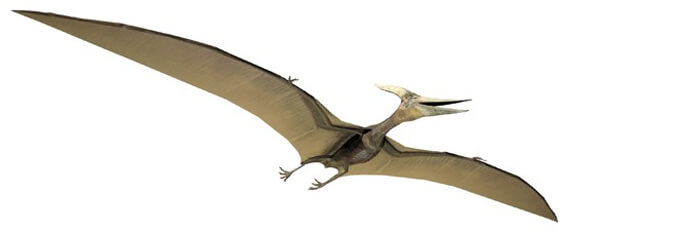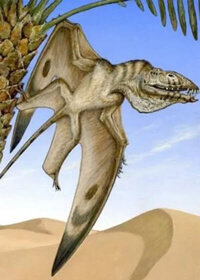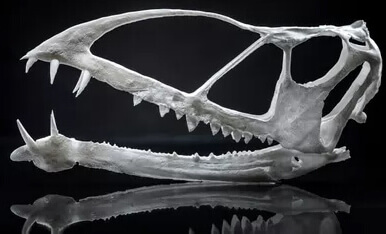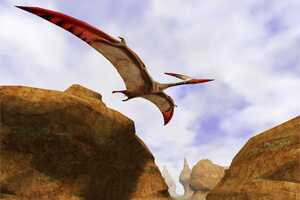
It’s a common misconception that Pterodactyls were dinosaurs. They weren’t birds and they weren’t dinosaurs. They lived during the time of the dinosaurs, so that’s probably the source of the confusion. Pterodactyls were pterosaurs, a family of reptiles separate from dinosaurs that could fly. Pterosaurs are more closely related to birds than to any other reptile alive today.

Artist rendition of the find
Before this find pterodactyls weren’t thought to be alive on Earth that long ago. This new find puts them on Earth 65 million years earlier than previously thought. This creature lived during the Triassic period and its fossil is amazingly well-preserved. Most pterodactyl fossils previously found are badly mangled. Its uncommon to find more than a single bone. But this fossil has an almost fully-intact skull. It was unearthed at Saints and Sinners Quarry in Utah and was preserved in sandstone.
Brooks Britt, a geologist at Brigham Young University said, “For this animal, we have the sides of the face and the complete roof of the skull, including the brain case, complete lower jaws and part of the wing.”
Pelicans use their pouch to store fish for eating later, but this creature didn’t do that. It roamed the desert where fish were near impossible to find. Scientists think the pouch could have been used to store other desert-dwelling reptile prey. Another possibility is the pouch was used to make vocal sounds to attract mates.

A 3D printed skull based on the fossil found.
Britt’s study was published in the peer-reviewed journal Nature Ecology and Evolution.











